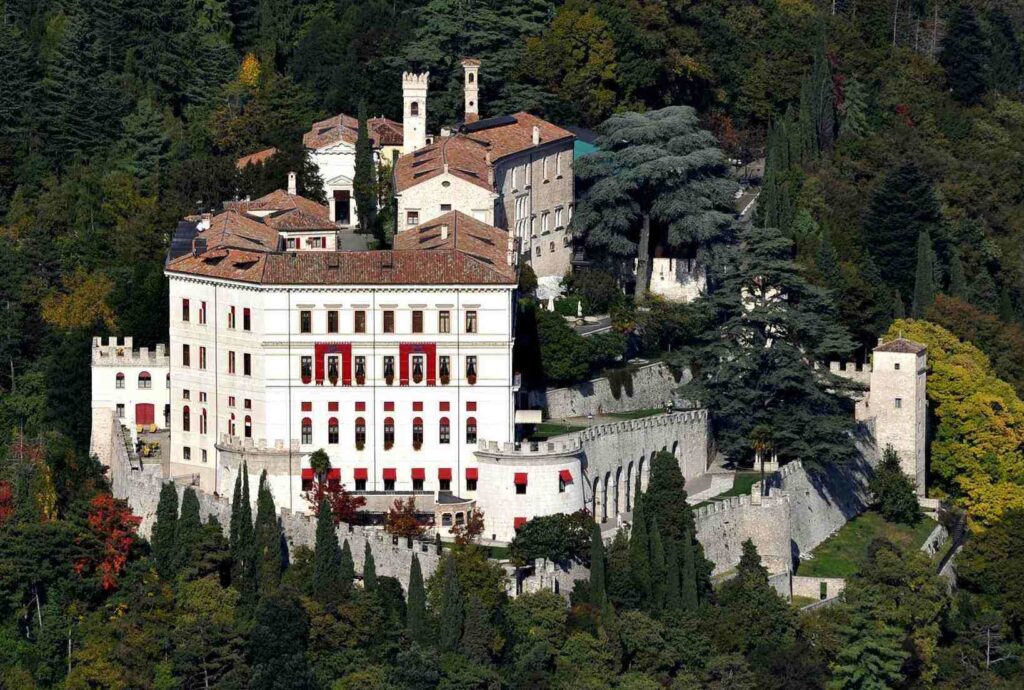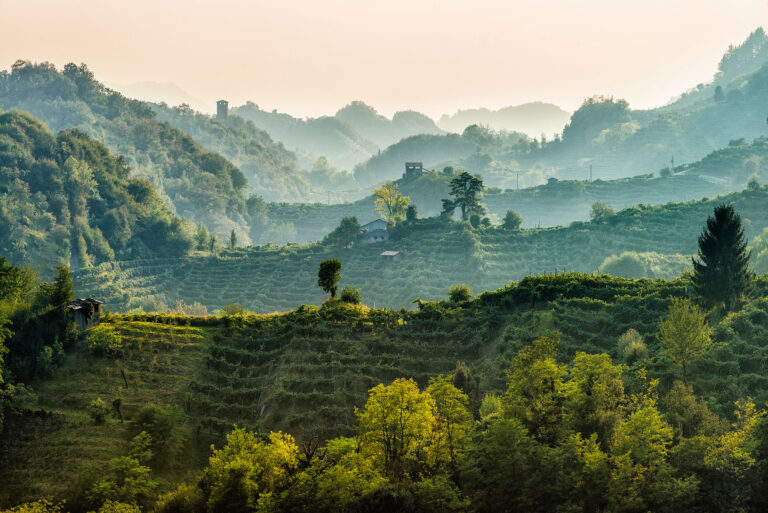The Brandolini d’Adda’s Castle, now Castelbrando, is located in the Municipality of Cison di Valmarino in the foothills area, on a spur of Mount Col de Moi in a strategic and highly suggestive position.
The imposing building is made up of various buildings that differ in age and characteristics. Towards the end of the twelfth century. The military fortress was erected and in the following century the Caminesi feudal lords made it habitable by erecting a building and a central tower surrounded by crenellated walls. In 1436, the Republic of Venice invested Brandolino III and Gattamelata with the fiefdom of Valmareno as a reward for the war services.
During the five hundred years of possession of the Brandolini, the castle was enlarged and underwent numerous renovations. In the early 1500s, some parts of the previous buildings were demolished and Antonio Maria Brandolini commissioned illustrious designers to create the central body, decorated with the double order of Venetian mullioned windows and three-mullioned windows with the large party hall inside, and the rectilinear walls. with the circular ramparts as well as to obtain an internal park. The theater, on the other hand, was conceived in 1683.
The eighteenth-century interventions were the work of the architect Ottavio Scotti who enlarged the southern part of the castle. With classic taste he created an enormous royal staircase, halls and halls embellished with decorations, and interior spaces were set up for private apartments, those for guests and servants, the stables, the lemon house, the garrison lodgings, together with shelters for carriages and service warehouses. The intervention also included the construction of the small church of San Martino, on the site of an existing medieval one, rich in stuccos and frescoes by the Cisonese painter Egidio Dall’Oglio, a pupil of Piazzetta. Between the end of the 19th and the first decades of the 20th century, the complex suffered considerable damage due to a fire and during the First World War it became a military hospital. From 1929, after a restoration, it returned to the family residence. In 1959 the property passed from the Brandolini to the Salesian Fathers who made it a center of culture and spirituality.
Many illustrious personalities of the past have been involved in various ways in the long and fascinating history of the castle: Claudius Augustus and Otto I in the Roman period, numerous counts in the Middle Ages, various prosecutors of the Serenissima, Caterina Cornaro queen of Cyprus, Antonio Canova, Queen Margherita and other.
After a long restoration, the castle is now one of the largest and most functional in Italy and houses a hotel, restaurants, a wellness center, theaters, bars, museum areas, halls for conferences, concerts and events.
In the old prisons of the Castelbrando castle
Castelbrando di Cison di Valmarino has always fed a rich collective imagination. The chronicle, mixed with the fervent popular imagination, has provided the raw material for the flourishing of legends, set in a dark Middle Ages or in the nearest centuries.
Thus, walking through the museum of the old prisons, open all year round, you can relive the atmosphere of a trial in the Valmareno fiefdom between the 16th and 17th centuries and even observe the chamber of torments. According to legend, the sad moans of the souls of the executed in the well are still heard on the night of the dead.
CastelBrando
Via Brandolini, 29 – 31030 Cison di Valmarino (TV) Italy
Tel. 0438 976011 – hotel@castelbrando.it – restaurants@castelbrando.it




